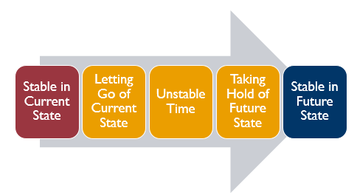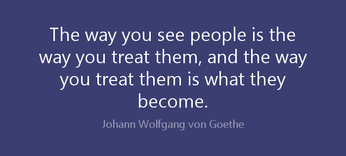August 2017 Newsletter
Continuous Improvement Through Lean
Did you notice our new video on the home page? The 2016-2017 school year was an extraordinary year for DMPS's lean journey. Our newest video highlights three process improvements that are leading to increased efficiencies, effectiveness and great student outcomes. Take a few minutes to watch it here!
Did you notice our new video on the home page? The 2016-2017 school year was an extraordinary year for DMPS's lean journey. Our newest video highlights three process improvements that are leading to increased efficiencies, effectiveness and great student outcomes. Take a few minutes to watch it here!

Change Management
Change is not just an event, it is a process. It takes time (LOTS of time) to transition. Keep in mind what people are going through at each phase.
Change is not just an event, it is a process. It takes time (LOTS of time) to transition. Keep in mind what people are going through at each phase.
- Stable in the Current State: This is the comfort zone. Leaving this stage can be tough. Sometimes we have to help get people moving.
- Letting Go of Current State: This is where we see the grief kick in as we actively move away from what we know, toward the new.
- Unstable Period: That middle no man's land is the hardest part of the journey. Connect with others and offer support.
- Taking Hold of the Future State: We are closer to the future state than the previous state. Rest when you need to and keep yourself and others from backsliding as you continue to move forward.
- Stable in Future State: You did it! Celebrate the accomplishment of being stable in future state, and learn from the journey and the effort put in to get there. Knowing there is likely more work and more change ahead.

Process vs. People
It is difficult to see the system or the processes at work as they are invisible. It is not easy improving something you cannot see. However, the people doing the work are very visible. As a result, the tendency is to blame the people for a broken process. Further, with our attention on the visible, we strive to fix the people instead of the process.
So what are you to do? Make the invisible visible, focus on the now visible system, identify waste, Lean it up and sustain the results.
It is difficult to see the system or the processes at work as they are invisible. It is not easy improving something you cannot see. However, the people doing the work are very visible. As a result, the tendency is to blame the people for a broken process. Further, with our attention on the visible, we strive to fix the people instead of the process.
So what are you to do? Make the invisible visible, focus on the now visible system, identify waste, Lean it up and sustain the results.
Shout Outs!
Awesome job Bambi Piper and Tina Stifel for recognizing wastes in day to day work and suggesting improvements!
Thank you Ben Graeber, Christi Donald and Sue Royce for starring in our Continuous Improvement through Lean video!
Thank you Ben Graeber, Christi Donald and Sue Royce for starring in our Continuous Improvement through Lean video!
